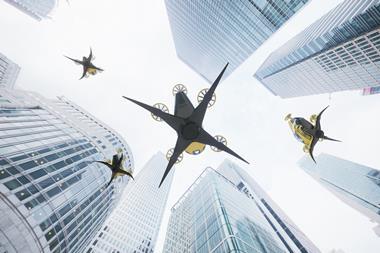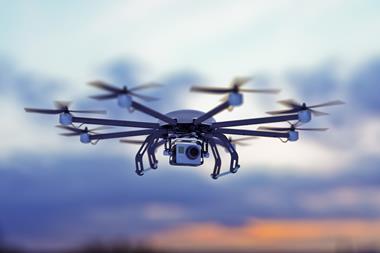As more businesses look to deploy in-house drone capabilities, corporate cover requirements need to change to accommodate this risk
The use of drones has evolved from being just a tech hobbyist’s weekend activity to instead playing a much more vital role in the overall UK economy.
A July 2022 report from PricewaterhouseCoopers (PWC), the Department for Business, Energy and Industrial Strategy and the Department for Transport – entitled Skies without limits: The potential to take the UK’s economy to new heights – revealed that drones are set to contribute £45bn to the UK’s economy by 2030.
Also over the next eight years, the report predicted that the use of drones will save businesses around £22bn a year, while 270,000 jobs in 2030 will be linked to drone adoption. A further 650,000 jobs will positively benefit from the implementation of drones in more use cases.

These are not negligible figures.
With the business case for drone adoption solidifying, insurance requirements are, in turn, gathering momentum – especially as insurance is a mandatory legal requirement for commercial drone pilots and that drones themselves can cost thousands of pounds each, in addition to the cost of any technology or goods the drone may be carrying.
This is certainly a trend being seen by Simon Ritterband, managing director of drone specialist MGA Moonrock Drone Insurance.
Meeting over decaf coffees in Holborn this week, Ritterband told me that the main shift he has noticed in drone insurance buying patterns is that more companies “are buying drone insurance on a corporate level” in order to support in-house teams, rather than hiring a “one man band” or SME to perform drone-based work “at £2,000 a day”.
Businesses bringing drone skills in-house include surveying companies, media and film organisations or advertising agencies, for example.
Ritterband added that for businesses using drones, cover will soon become “a commodity” that “will just be another part of their insurance requirements”, alongside protection such as public liability, employers’ liability and directors’ and officers’ insurance.
Brokers supporting risk evolution
In line with the projected uptick in commercial drone usage, Ritterband is leading the charge to push drone insurance from being considered a “niche” risk to instead become “a regular, vanilla insurance product”.
He believes the insurance market is about one-third through this risk evolution journey.
Ritterband noted that brokers have raised the bar too when it comes to understanding drone insurance – over the past six years, Ritterband has seen broker conversations develop from nervous niche considerations to “asking the right questions” and displaying “much more advanced knowledge” about “qualifications, the level of public liability that’s required” and “their customers’ needs”, for example.
Becoming a commodity
In terms of the use cases Ritterband is seeing, light shows put on by swarms of drones are becoming a more popular tool for advertisers and event organisations, while the use of drones to conduct deliveries is having a knock-on effect on infrastructure and town planning departments.
Read: Biba launches new drone scheme for members
Read: Drones, medical malpractice and cyber are top tech risks for 2022 - DAC Beachcroft
Explore more news content here, or read up on products here.
This includes working out where drones can safely land to facilitate delivery drop offs and whether this should be a consideration for new build homes moving forward – for example, with rooftop landing hubs or retractable balconies included as standard.
Drones may also be considered an attractive alternative when considering the government’s push towards a net zero carbon emissions economy – although larger drones are still fuelled by petrol or diesel, many are powered by electric batteries, making them carbon neutral.
Drones are no stranger to the emergency services or NHS either, being used to deliver defibrillators in mountain rescue situations, for example, or in crash or missing persons investigations.
Ritterband added that the government is keen to commercialise the use of drones more moving forward.
“Drones are revolutionising every part of society,” he said. “Being in an insurance institution is one part of this amazing ecosystem of drones and I get to see that entire overview of everything.”
For me, drone insurance appears to be a fast evolving area that is mirroring the cyber insurance sector in terms of its pace of change.
This means that organisations like Moonrock Drone Insurance, brokers and other insurers must stay on the front foot when designing and recommending policies to ensure that the plethora of possible growing use cases is properly insured.












































No comments yet